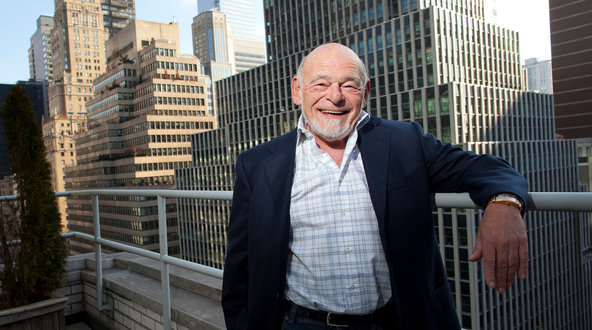The economy barely budged in the fourth quarter of 2012, expanding at an annual rate of 0.4 percent, and then only after the initial reading was revised upward. Unemployment was 7.6 percent in March , and home prices, though off their lows, were about where they were a decade ago.
As mediocre as those numbers are, they were achieved with huge Federal Reserve assistance and government spending. Another sobering consideration is that the situation is not so great elsewhere, either. Europe, which is getting central bank help of its own, has sunk into another recession. And while Asia is expanding much faster than the West, it is doing so-so or worse by the standards of its own recent history.
While the first quarter of this year was expected to be better than the fourth quarter of last year, at least in the United States, many economists and investment advisers find themselves resigned to living in a world with persistently low growth. Populations are aging in the developed world, economists point out, while resources are scarcer, and the huge debts run up to finance government stimulus will have to be repaid eventually, diverting money from other uses.
“Hopefully it won’t be slow forever, but over the short to medium term it’s something you need to prepare yourself for, for sure,” said Russell Croft, a co-manager of the Croft Value fund.
The Congressional Budget Office, in a report on the domestic economy issued in February, forecast “real potential gross domestic product” growth of 1.8 percent to 2.5 percent a year through 2023.
Farther afield, the International Monetary Fund expects global growth of 3.8 percent this year and 4 percent in 2014. That is a modest upturn from its estimate of 3.2 percent for 2012, but according to United Nations data, lower than in 9 of the 10 years before the financial crisis.
As somber as the outlook is, slow growth has not been much of a hindrance to stock and bond markets in the last four years, when corporate profit margins reached record highs. That is proof that investment portfolios need not suffer along with the economy, something that hardly surprises Jeremy Grantham, chief investment strategist of the fund management company GMO.
In a recent letter to shareholders, Mr. Grantham said he found little connection between strong profits and strong economic growth. If anything, rapid expansion can hurt bottom lines, he said, because companies tend to pay too high a price trying to exploit it.
“The problem with growth companies and growth countries is that they so often outrun the capital with which to grow and must raise more capital,” diluting earnings per share, he said.
That doesn’t make it safe to ignore the economic environment. Those who foresee continued lethargy point out that investors have already had several years to adjust to slow growth and have put their money to work accordingly. That means that they can expect returns to be lower, and to come from fewer market niches, and not necessarily the ones that conventional wisdom suggests would do better.
“The attitude is that slow growth equals a bad investment environment, so you want to buy bonds,” said Nathan J. Rowader, director of investments at the Forward Funds. “But interest rates are very depressed, so you can’t get decent returns in bonds. You need to think about it from a secular standpoint. Low growth and low rates is a good environment for stocks.”
Mr. Rowader favors businesses that return cash to shareholders rather than investing it in a heroic effort to wring growth out of an economy that has little of it.
“It’s important in this scenario to buy dividend-paying stocks, because the ways that companies can grow earnings are limited,” he said. “It means something to show that they can pay dividends and grow them over time instead of hoping that the economy gets better.”
Suitable companies tend to have strong balance sheets and credit ratings, Mr. Rowader said. They do not have much debt, but can borrow cheaply anytime they choose. He prefers European examples over American ones because they have similar business mixes, but are often cheaper.
“They can grow their dividends over time, but they’re being punished because they’re European,” he said. “You can also get a bump up when that undervaluation starts to correct itself.”
Three such companies in Forward’s portfolios are Lottomatica, an Italian provider of gambling technology; Danone, the French food giant; and Ensco, a British enterprise engaged in deepwater oil drilling.
CHUCK AKRE, manager of the Akre Focus fund, says he likes to look for stocks of companies that can expand despite the poor economy.
“We continue to be focused on trying to find compounders,” Mr. Akre said, meaning companies that generate comparatively high returns on capital and have a record of plowing earnings back into their businesses in wise, profitable ways. The sorts of returns that they can produce are lower in a sluggish economy, he added, but their valuations are lower, too, so shareholders can still do well.
Two of his holdings are MasterCard and Visa. Even though “in a slower-growth economy people spend a little less on cards,” he said, these companies can still flourish from the broad global trend toward increasing card use and less reliance on cash and checks.
Mr. Akre also owns shares of American Tower, which rents space on cellphone towers through contracts that call for annual price increases. “It’s a great business model regardless of the environment,” he said. “It’s vertical real estate.”
Mr. Croft shares Mr. Rowader’s appreciation of big dividend payouts, but Mr. Croft prefers to obtain them from American companies that do business in places with “pockets of growth that are faster than the U.S.,” he said.
His selections include Mondelez International, a snack food manufacturer spun off from Kraft that derives 45 percent of sales from emerging markets; the tobacco producer Philip Morris International and “solid blue-chip companies that may not be as expensive as they used to be,” like Johnson Johnson and Pfizer.
Mr. Croft also likes companies that are improving productivity or resolving issues that have limited profits, including three makers of big-ticket items of various sorts, Whirlpool, Ford Motor and Honeywell. The idea is to own businesses that are fixing themselves when the economy is struggling to manage the same feat.
“Everyone talks about how margins are at their peaks, and they wonder how long it can keep going,” he said. “You’ve got to find companies that are hitting new peaks and are going to keep getting better.”
Article source: http://www.nytimes.com/2013/04/07/business/mutfund/a-low-growth-world-can-also-mean-high-profits.html?partner=rss&emc=rss



